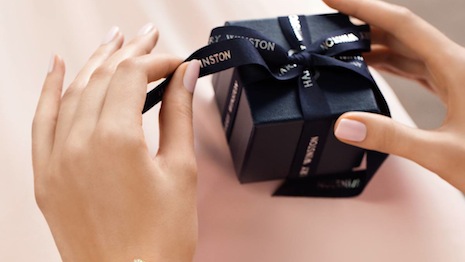 Consumers want a day to treat themselves. Image credit: Harry Winston
Consumers want a day to treat themselves. Image credit: Harry Winston
While U.S. consumers have plenty of options to celebrate loved ones in their lives throughout the year, new research finds the demand for a retail-created holiday to fill the self-gifting void.
A.T. Kearney found that about a third of customers are interested in adding a new commercially-driven holiday to the calendar, supplementing existing dates such as Valentine’s Day. Even as consumers trade in commercialism for experiences, there is still an opening for a brand to step in with an American answer to Alibaba’s Singles’ Day.
"We see a shift in consumers wanting more experiences, but when asked how they would like to treat themselves, roughly a third of consumers still say 'by shopping,'" said Patricia Hong, partner in the consumer and retail practice of A.T. Kearney, a global strategy and management consultant, and head of its beauty and luxury division.
"We think there is a strong opportunity for retailers to infuse a stronger experience element in shopping," she said. "Consumers are prepared to reward them for the right experience.
"Commercial holidays can be one way to create an experience around shopping. These holidays create a shopping occasion for consumers that feel more special and give them a reason to shop."
A.T. Kearney’s report is based on a survey of 1,000 consumers.
Me time
Respondents in A.T. Kearneys study are fairly evenly split in what type of holiday they prefer. Thirty-five percent of consumers want a day celebrating themselves, and 36 percent want to celebrate others.
However, when split by age groups, consumers under the age of 44 were most interested in a self-centered day. Meanwhile, those 45 and older were driving the interest in days for pets, family or friends.
Consumers want a chance to spoil themselves. Image credit: Moda Operandi
Consumers were also willing to spend more on a self-pampering day. When asked what they would spend on a new holiday celebrating others, the median expected budget was $50, but the median was $100 for a holiday devoted to themselves.
Additionally, three in 10 consumers are willing to spend $200 or more on a day centered on treating themselves.
Even with this interest in having a new holiday, 59 percent say they plan to spend the same on commercial holidays that are already part of the calendar. An additional 29 percent plan to spend more.
Reflecting consumers’ growing desires for experiences, the top purchasing categories for a hypothetical new commercial holiday are travel, dining and entertainment. These are followed by apparel and accessories and electronics.
Spa Metropole by Givenchy. Image credit: Hotel Metropole Monte Carlo
In-store would be the top channel for purchases, but digital channels such as Web sites and mobile applications were also mentioned frequently by respondents.
When asked what would spur a purchase during a new shopping holiday, free shipping and returns was the second most mentioned perk. Consumers are also interested in a gift with purchase.
Consumers are most in favor of a new holiday in January, allowing them to celebrate in between the December holidays and Valentine’s Day. Other popular time periods include June, August and December.
Shopping holidays
Ten years in, Singles’ Day has established itself as the largest global shopping holiday of the year, with sales eclipsing Black Friday.
Celebrated every year on Nov. 11, retail giant Alibaba turned Singles’ Day from a holiday for unmarried individuals into a discount-driven ecommerce extravaganza in 2009. In more recent years, Singles’ Day has evolved into a more global, omnichannel affair, opening up opportunities for luxury brands to cater to consumers beyond China (see story).
Stateside, ecommerce giant Amazon hosts its largest annual promotional event in July, which can serve as an example to luxury retailers as they hope to make inroads with their online shopping strategies.
Taking place throughout a 36-hour window, Prime Day generates billions of dollars in sales for the online marketplace. This record-breaking shopping event also serves as an opportunity for legacy brands to capitalize on consumers' spending during this "Christmas in July" period (see story).
This past year's Prime Day saw record sales, as consumers bought 100 million products.
"The big takeaway from Alibaba’s Single’s Day is that consumers everywhere want to treat themselves," A.T. Kearney's Ms. Hong said. "In the U.S. there has been a lot of focus around gifting holidays, but we see consumers asking for an opportunity to treat themselves.
"If we look at the willingness to spend on themselves versus others, we see that consumers are willing to spend twice as much to treat themselves," she said. "This is a great opportunity for retailers to capture incremental value."

